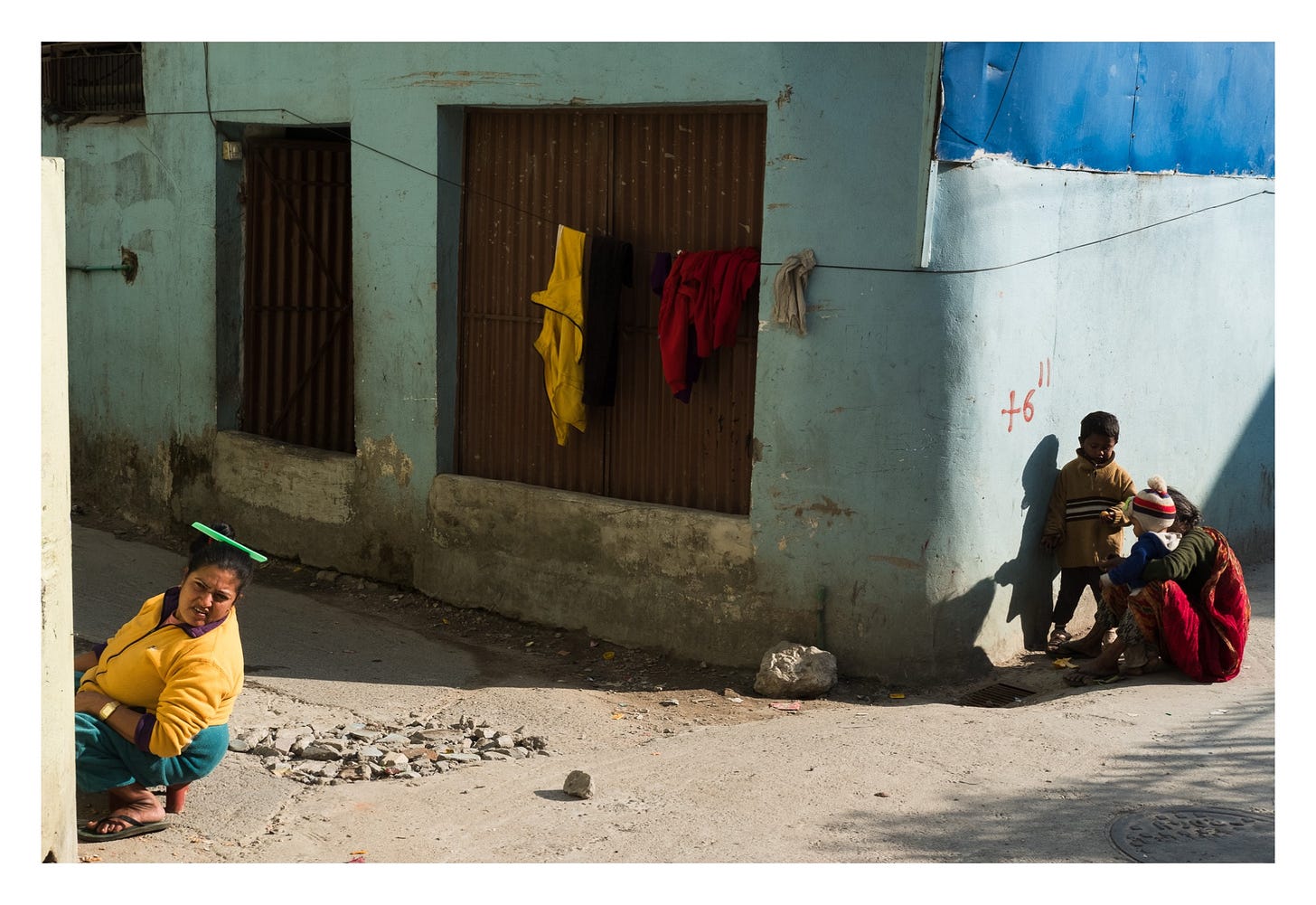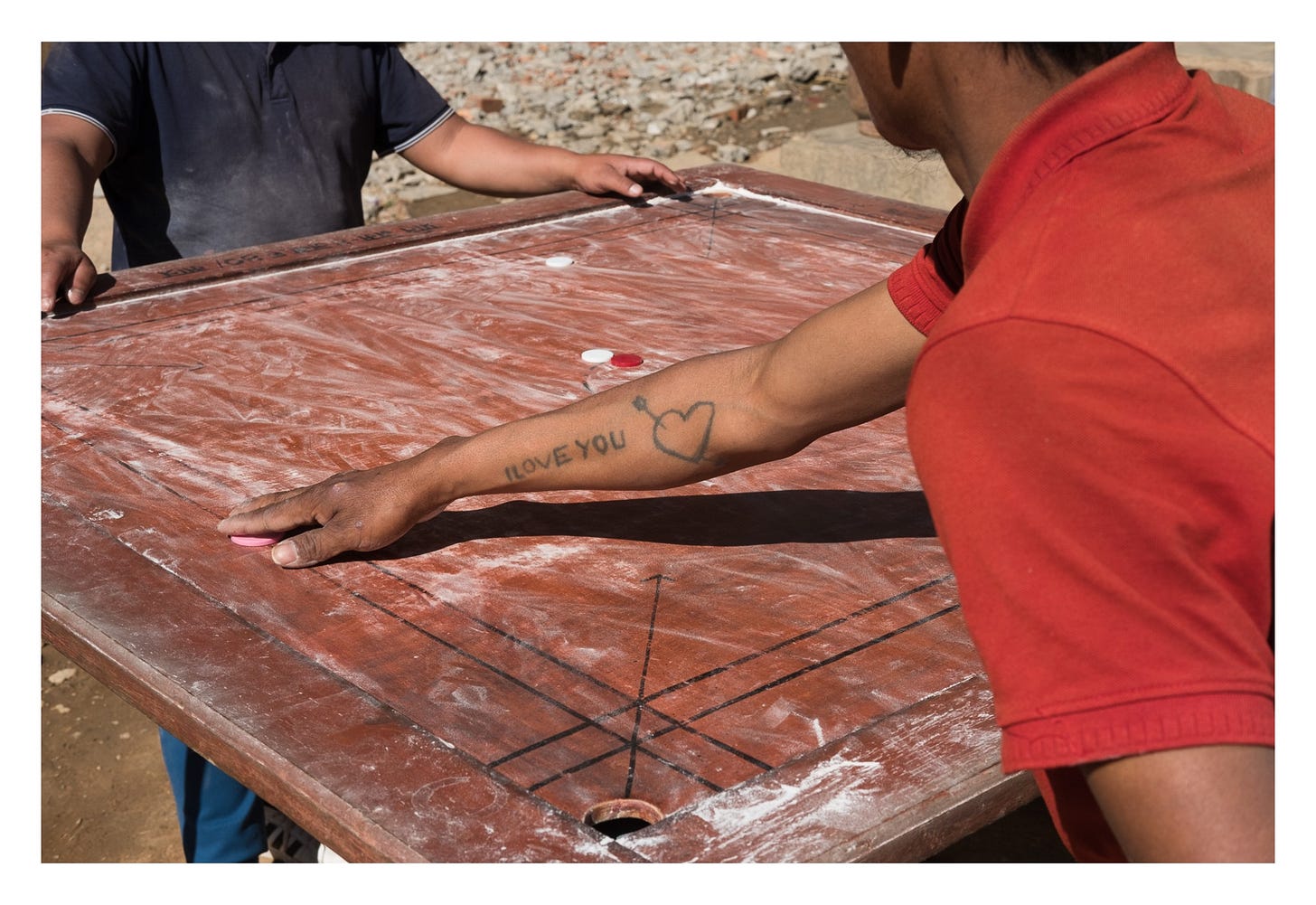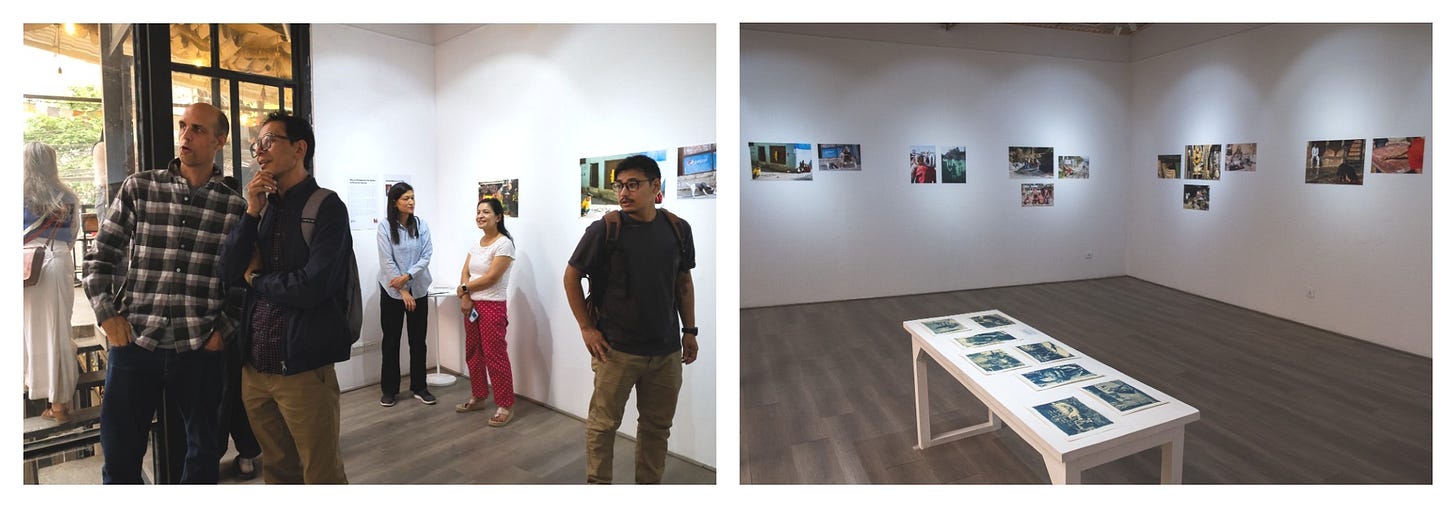Now that the dust has settled on my time in the Kathmandu Valley, I've been looking at my notes and pictures and thinking about a book project. It's gonna take a little while for that to come to fruition. So, in the meantime, here's something I hope whets the appetite.
Kathmandu, for this Englishman, was a step into the unknown. The name was familiar enough. Growing up, TV travel programmes told me tales of Gurkha bravery and about their unique role in the British Army. But without any real-life reference points, it felt like a mythical place too far away to contemplate. That was until I found photography. The Himalayan light and welcoming souls have made Nepal something of a Mecca, and I was soon planning a pilgrimage. Reading reports from those who had gone before, one word consistently cropped up - chaos! It added to the photographic appeal. But were my fellow Westerners simply experiencing culture shock? Or was this a reality shared by the locals? It got me thinking about an old phrase I once heard. "What's normal for the spider is chaos for the fly."1
At first, the preconception seemed well-founded. With pavements thin on the ground, the roads were busy. Cars, scooters, and people compete for a path forward while buses and lorries chuck out thick black smoke. Where I expected traffic lights, there were traffic cops blowing whistles and waving white gloves. On building sites, women do the heavy lifting. With the head-loading technique, they trudge bricks and gravel wherever the foreman needs it. The pollution all this creates is palpable, and my senses looked for a way out. But in the Kathmandu Valley, the morning soup cannot be avoided. No matter which route you take. Dust fills the air, and sewage fills the rivers. And the frequent sound of hawk-tuah confirms the risk is respiratory.
The recalibration of my expectations continued. A symbol that triggers moral outrage back home is commonplace. Swastikas adorn garden gates, restaurant walls and taxi dashboards. No one bats an eyelid around here. The auspicious symbol of good luck and wellbeing has retained its original positive meaning that goes back millennia.
A cultural diversion took me to Bhaktapur for Navadurga, a Hindu festival dreamt up by a 15th-century king. It was another eye-opener. Three men dressed in their Sunday best mark the occasion by beheading a goat in broad daylight, their bare feet making little attempt to avoid the rivers of blood. In the aftermath, a stray dog makes a meal of the claret while a man in mourning looks on, his all-white attire a symbol of his recent human bereavement. Later in the day, masked dancers impersonate deities and pull the heads off chickens to squeals of neighbourhood delight.
The Nepali way of life felt strange and fascinating. Religious traditions overlap and are the order of the day. Deities and rituals are shared and celebrated by differing devotees. "Buddha was a Hindu. Don't you know?" No, I didn't. But the non-sectarian approach was refreshing.
When conversations turn political, native Nepalis express discontent, some more vehemently than others. Their politicians have acquired an unscrupulous reputation, and rumour has it royalty might return. The political instability explains a lot. Infrastructure is in disarray, and for young Nepalis, the grass is greener elsewhere. Many now live and work overseas - significant chunks of their pay packets sent back to the bank of Mum and Dad.
Another thing that works differently in Nepal is time. Every day is like Sunday. But Western connotations don’t apply. Sunday is the start of a six-day workweek, kids go to school, and it's business as usual for most shops. Saturday is their one-day weekend. But the disorientation doesn't stop there. The current year in Nepal is 2082. And, there are nine different New Year celebrations in the calendar. So, with the position of the moon dictating the dates of many festivals, it's no wonder Nepalis take a relaxed view of punctuality. "You'd be late to your own funeral" is not a phrase that gets much use.
While we're on the topic of death, the festival, Shivaratri, gave me a reason to visit Pashupatinath, a temple and cremation site on the banks of the Bagmati River. In contrast to the clinical approach of my culture, mourners play an active role in their loved one's departure, dipping the deceased into the sacred waters before their earthly remains are laid on a bed of straw and set on fire. Meanwhile, Hindu holy men flock from miles around to worship, smoke joints and give pep talks to heathens like me.
Much of what I describe here relates to the Newari people, the largest ethnic group in the Kathmandu Valley. From staying in their homes, I realise we come at life from different angles. For Newaris, well-defined gender roles preserve the collective interests of the family, and the caste system plays a crucial role in social and marital arrangements. Many things are done for devotional and symbolic reasons. These cultural superstitions run contrary to my logical and libertarian personality. But I can see how these things bind the community together and why they persist. To put our differences in a nutshell, I'd say this. For Newaris, the heart rules the head. Where I come from, it tends to be the other way around.
As my four and a half months in Nepal went on, what seemed "chaotic" to my Western eye became "normal" as I understood its context. My social conditioning had given way to an empathy for people in an unfamiliar place. The illusory nature of normality had proved to be. Subjective experience is what matters most.
Reflecting on my first solo exhibition, there were many positives. The opening night was well attended by the general public, gallery owners and artists. The local photography community made me feel very welcome. Especially those at PhotowalkersNP and the Film Foundry. They seemed to enjoy my outsider viewpoint. Some said it helped them see "the beauty in the ordinary".2 Documentary photography exhibitions are not common in Kathmandu. So, hearing that my photographs mean something to native Nepalis made it all worthwhile. I hope my little show helps promote the medium in some way.
Ps. A special thanks to Raju Bhaandari, who helped me print my work.
I now find myself in Japan, and the vibe is very orderly. Where Nepal is gregarious and down to earth, Japan is reserved, highly respectful, and the toilets have got computers in them. Could this be the other half of the story?
The exact origin of the phrase, "What's normal for the spider is chaos for the fly" is difficult to ascertain. Goodreads attributes it to American cartoonist Charles Addams.
LinkedIn post from Nepali photographer Bishal Sigdel. Check out his Substack for the inside track on life in Nepal.










I love Kathmandu. I have been there many times. I love the people too. It was nice to watch and read from your perspective.
Pashupatinath also left me with a strangely good feeling. I thought about how quickly we bury the person we lose in our culture. In Pashupatinath, people spend time with their loved ones while sending them off.
Do you know the term 'Umwelt'? It is the way each living being perceives the world in its own way. This is definitely the basis of this article. Our perception of death is different from Hindus. It is based on the collective unconscious. Also, the umwelt of flies is different from spiders. For example, they cannot see spider webs.
What fine opportunity caught up with you in Kathmandu. There’s no better place for your first solo, only wished I was able to attend your exhibition. Waiting for your book. Till then, my best wishes to you and Angela.